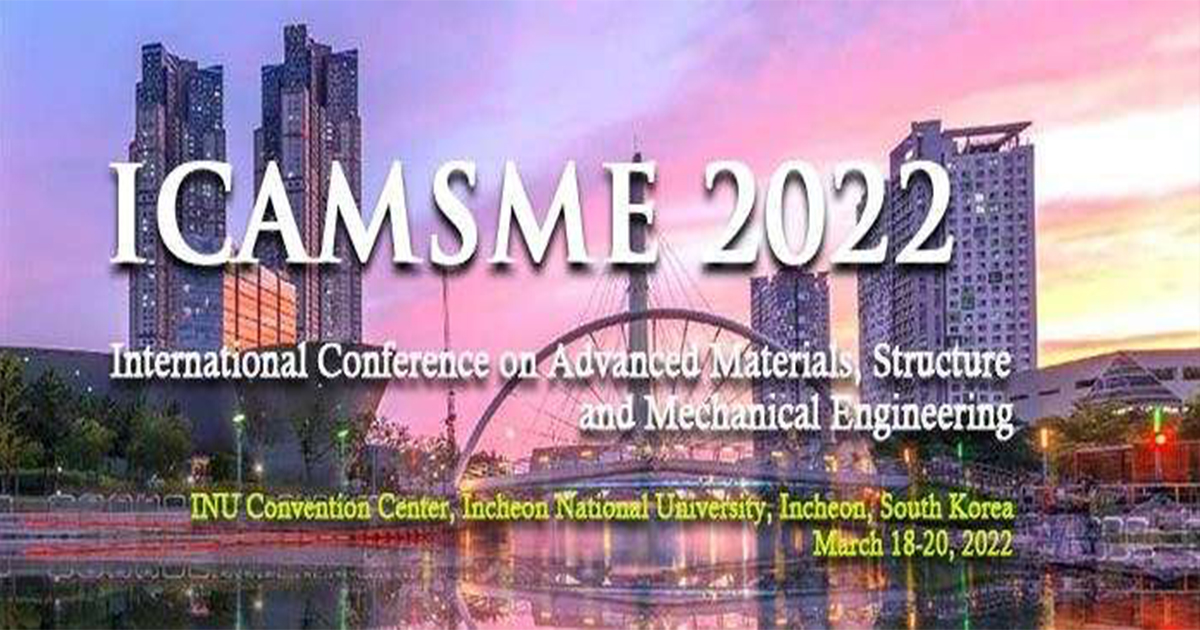- 2.5Impact Factor
- 5.5CiteScore
- 20 daysTime to First Decision
Selected Papers from ICAMSME 2022
This special issue belongs to the section “Materials Science and Engineering“.
Special Issue Information
Dear Colleagues,
The International Conference on Advanced Materials, Structures and Mechanical Engineering (ICAMSME 2022) will take place at Incheon National University, Incheon, South-Korea, March 18-20, 2022. The ICAMSME is an annual conference aimed at presenting the current research being carried out in the fields of materials, structures, and mechanical engineering. The idea of the conference is for scientists, scholars, engineers, and students from universities, research institutes, and industries all around the world to present their ongoing research activities.
Special Issue papers can only be accepted through conference paper submission. The high-quality papers from conference can be provided a 25% discount. It is envisaged that this conference will allow for the free exchange of ideas and challenges among participants and encourage future collaboration between members of these groups. The conference will also foster cooperation among organizations and researchers involved in the merging fields and provide in-depth technical presentations with abundant opportunities for individual discussions with the presenters.
Prof. Dr. Jong Wan Hu
Prof. Dr. Junwon Seo
Guest Editors
Manuscript Submission Information
Manuscripts should be submitted online at www.mdpi.com by registering and logging in to this website. Once you are registered, click here to go to the submission form. Manuscripts can be submitted until the deadline. All submissions that pass pre-check are peer-reviewed. Accepted papers will be published continuously in the journal (as soon as accepted) and will be listed together on the special issue website. Research articles, review articles as well as short communications are invited. For planned papers, a title and short abstract (about 250 words) can be sent to the Editorial Office for assessment.
Submitted manuscripts should not have been published previously, nor be under consideration for publication elsewhere (except conference proceedings papers). All manuscripts are thoroughly refereed through a single-blind peer-review process. A guide for authors and other relevant information for submission of manuscripts is available on the Instructions for Authors page. Applied Sciences is an international peer-reviewed open access semimonthly journal published by MDPI.
Please visit the Instructions for Authors page before submitting a manuscript. The Article Processing Charge (APC) for publication in this open access journal is 2400 CHF (Swiss Francs). Submitted papers should be well formatted and use good English. Authors may use MDPI's English editing service prior to publication or during author revisions.

Benefits of Publishing in a Special Issue
- Ease of navigation: Grouping papers by topic helps scholars navigate broad scope journals more efficiently.
- Greater discoverability: Special Issues support the reach and impact of scientific research. Articles in Special Issues are more discoverable and cited more frequently.
- Expansion of research network: Special Issues facilitate connections among authors, fostering scientific collaborations.
- External promotion: Articles in Special Issues are often promoted through the journal's social media, increasing their visibility.
- e-Book format: Special Issues with more than 10 articles can be published as dedicated e-books, ensuring wide and rapid dissemination.

